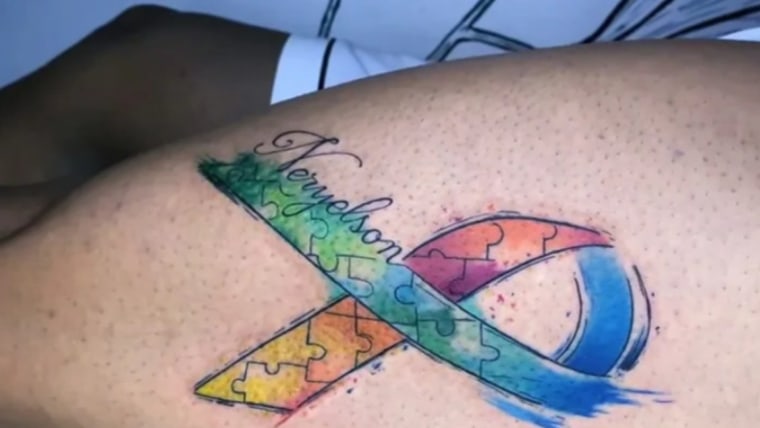Two crowns over the words “Mom” and “Dad.” A Michael Jordan “Jumpman” figure. A pocket watch that marks the time of a daughter’s birth. These are a few of the tattoos that some lawyers for deported migrants say were used by federal immigration authorities to label their clients members of the Venezuelan gang Tren de Aragua and justify their enforced disappearances to a notoriously brutal mega-prison in El Salvador.
And yet, in recent weeks, expert after expert has argued that tattoos are not a reliable predictor of Tren de Aragua gang affiliation. Sociologist Roberto Briceño León, who has been studying violence in Venezuela for 30 years, summarized the trouble with recent reports of tattoo targeting succinctly: “Venezuelan gangs don’t identify themselves with tattoos.” Real life, it turns out, typically does not resemble a low-budget crime flick.
Sadly, using certain visual and cultural signifiers to stigmatize people as criminals is not new.
Sadly, using certain visual and cultural signifiers to stigmatize people as criminals is not new. In my decadelong career as a public defender, I’ve witnessed many iterations of the strategy. During the first Trump administration, I represented teenagers on Long Island who were accused of being in gangs because of their tattoos, for wearing NBA apparel and for sporting Nike Cortez sneakers (which you might recognize as Forrest Gump’s shoe of choice). I distinctly remember coming home one day after meeting someone labeled a member of MS-13 because he wore Chicago Bulls apparel, only to turn on the television and see Miley Cyrus wearing the exact same clothes in a music video.
Today, the Trump administration is again citing Bulls apparel, in the case of Kilmar Abrego Garcia, a Maryland man wrongfully deported to El Salvador. Abrego Garcia has never been charged with or convicted of a crime in the U.S., and his family and lawyers deny any gang membership, but police in 2019 advised an immigration judge that Abrego Garcia “displayed traits associated with MS-13 gang culture” based on factors including his tattoos and clothing.
Police claim they use intelligence gathering to compile and update their understanding of gang tattoo iconography. But this, too, is a squishy concept that varies depending on many factors. And the intelligence gathering process itself is far from foolproof. Earlier this month, a white British man discovered a tattoo paying homage to his daughter was being cited by the Department of Homeland Security as a possible Tren De Aragua identifier.

Indeed, I would argue tattoos, gang allegations and other proxies have long allowed law enforcement to engage in policing that is seemingly race-neutral on its surface but ultimately race-based in practice. Body art becomes a socially acceptable pretext for ethnic and racial profiling.
Thus, one of the main problems with identifying gang members by tattoos is not the potential for mistakes. Rather, tattoo misidentification is better understood as a powerful weapon that can neutralize public empathy and scrutiny by cloaking race-based attacks in race-neutral excuses.
That is why the use of tattoos and clothing can also be connected to other infamous examples of racial profiling, like “stop-and-frisk,” which at its height resulted in hundreds of thousands of Black and Latino New Yorkers’ being accosted by police every year. After a New York court forced the NYPD to abandon the program, the police department created Operation Crew Cut, a “war on gangs” initiative powered by a database that criminal justice activists said marked teenagers as targets for surveillance and harassment. Tellingly, tattoos were one reason a person might be included in the database. More than 20,000 people were added to the database in a 10-year period — according to an analysis by CUNY Law Professor Babe Howell, 99% were not white.
Such pretexts are necessary because the underlying policies, when laid bare, are not always broadly popular.
Such pretexts are necessary because the underlying policies, when laid bare, are not always broadly popular. Mass deportations and enforced disappearances require convincing the public that certain people are disposable and undeserving. Alleged gang affiliations and criminal records serve as more palatable and convincing justifications when ethnicity alone is not enough.
The cruelty of President Donald Trump’s deportations is a brutal escalation of an already brutal system. And while the majority of Republicans still approve of his immigration policies, more Americans now disapprove than approve of the way he is handling the campaign issue, according to the most recent Reuters/Ipsos poll. These numbers offer some hope. Recognizing the mutual humanity in another person is only natural; it takes an enormous amount of effort to undo this basic human instinct.
The lesson is this: Our immigration and criminal legal systems are not designed to bring about justice and safety. Where there is specious pretext, there are human beings being violently ripped away from their families and homes and sentenced to indefinite captivity. As the dragnet grows, we need to reconsider what makes it possible to see some communities as disposable. And we must resist the dehumanization that enables abuse and false justifications. Otherwise, the scope of who is deemed disposable will continue to expand.
